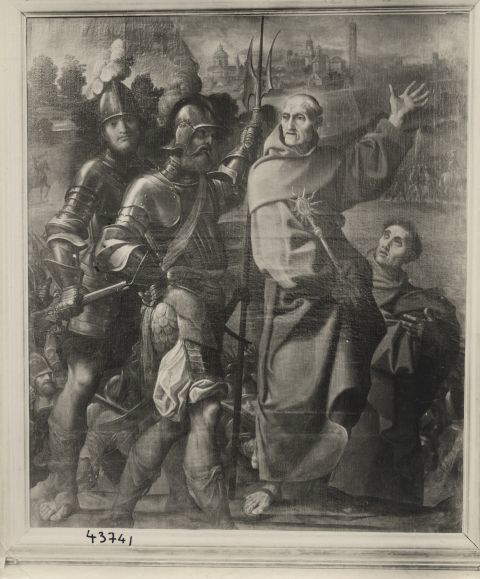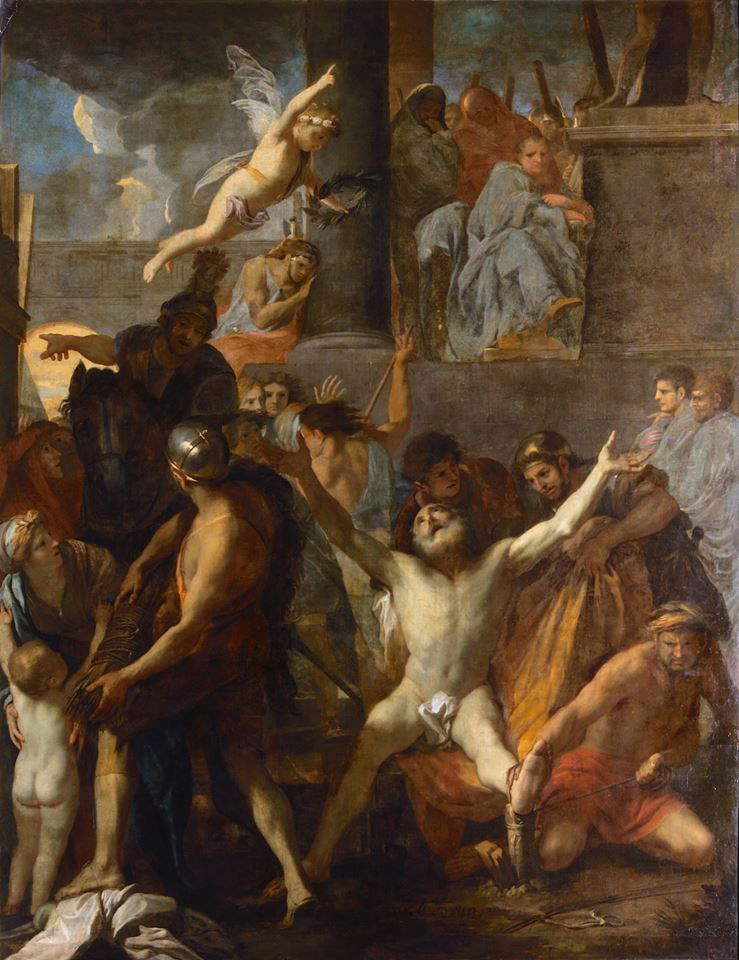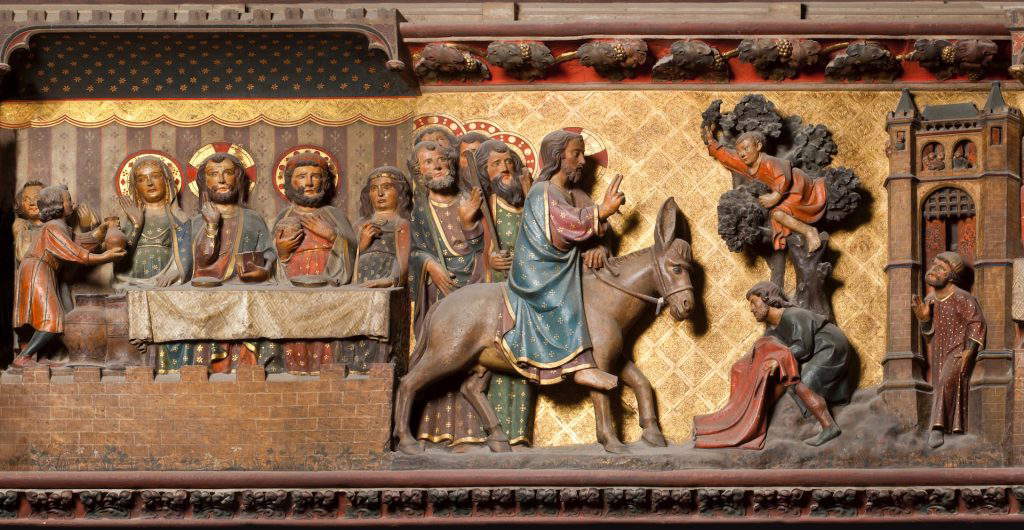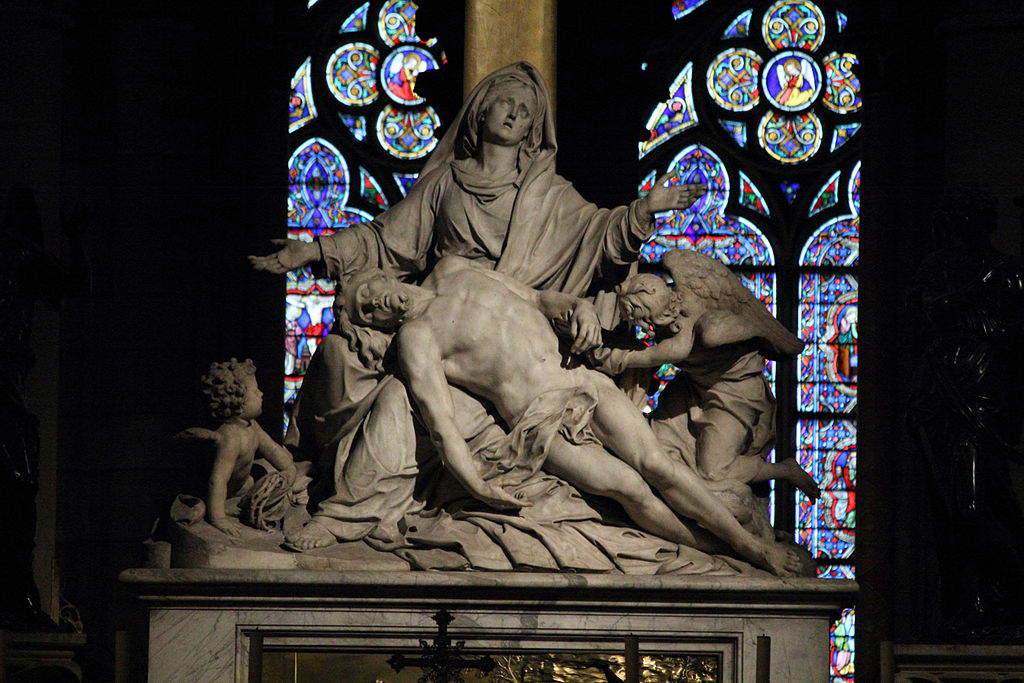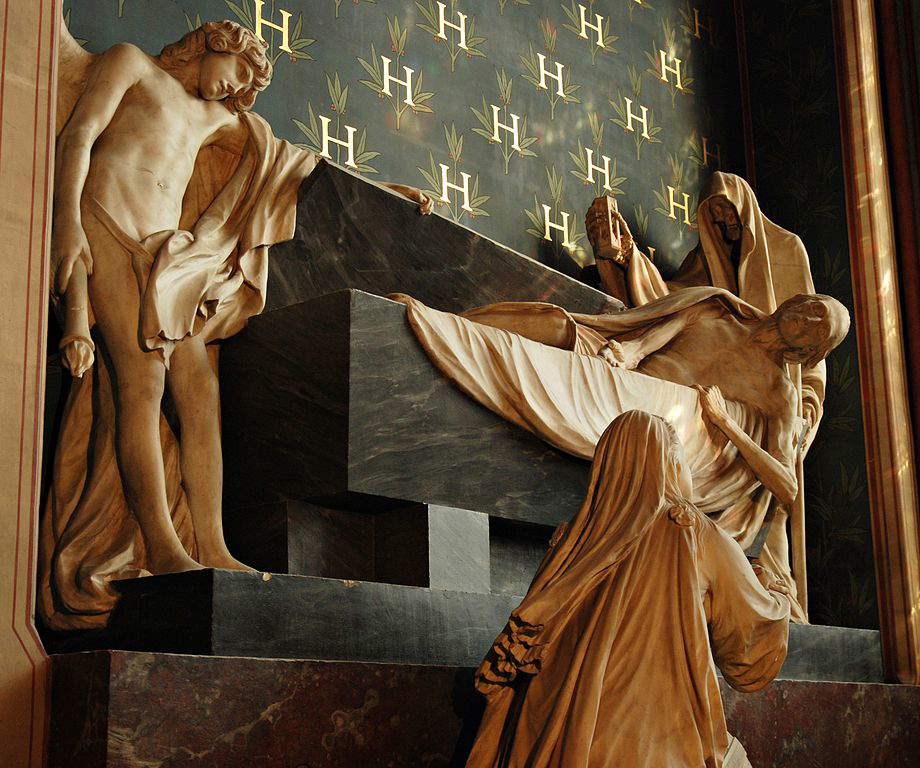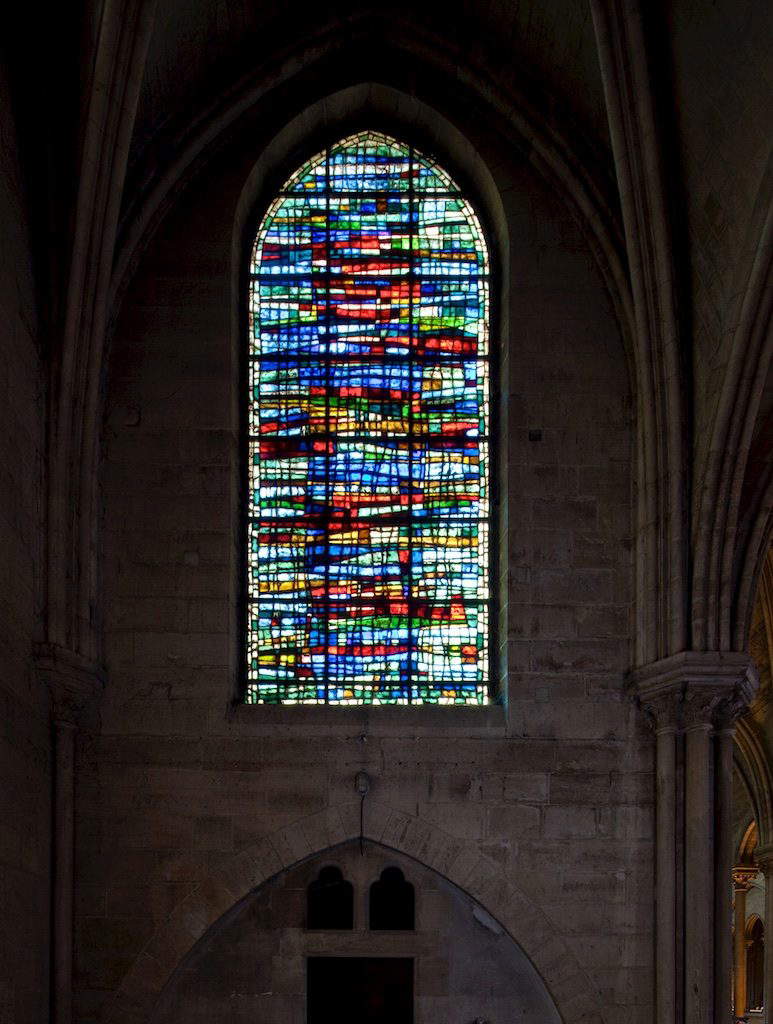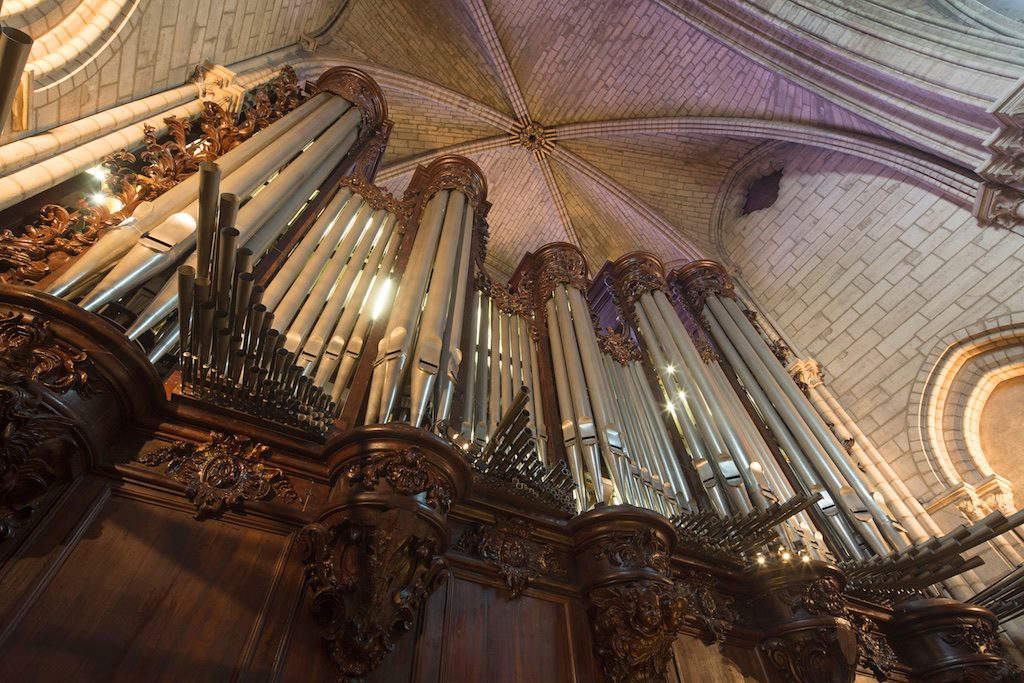by Redazione , published on 16/04/2019
Categories: News
/ Disclaimer
What works are in danger of being lost forever in the Notre Dame fire? Several paintings, sculptures and other major works.
Notre-Dame Cathedral is not only a symbol of Paris and France, one of the most famous and visited monuments in the world, the great cathedral protagonist of Victor Hugo ’s Notre-Dame de Paris (the novel from which numerous film adaptations have been made): it is also a place where many valuable works of art are preserved. We have already missed the flèche, the great spire built in the second half of the 19th century at the time of the renovations promoted by Eugène Viollet-le-Duc (Paris, 1814 - Lausanne, 1879): it was 45 meters high, rising more than 90 meters above ground level, and was erected in 1860 at the intersection of the main body and the transept, at the spot where an earlier spire built in about 1250 stood, remodeled in later periods and finally demolished between 1786 and 1792. However, there are several works whose fate is still unknown: in the meantime, firefighters are working hard, along with personnel from the French Ministry of Culture, to bring as many works as possible to safety.
Paintings
Notre-Dame Cathedral contains many paintings, mostly by French artists, but there is no shortage of works by Italian artists either. One of the most valuable works preserved in the building is the altarpiece depicting Saint Job, a painting by Guido Reni (Bologna, 1575 - 1642) commissioned in 1622 by the Arte della Seta of Bologna, but not finished until 1636. The work later arrived in Paris and is located on the tribune of the facade. Also from the Emilia area is an altarpiece by Ludovico Carracci (Bologna, 1555 - 1619) depicting St. Bernardine of Siena Saving the City of Carpi, originally kept at the church of San Bartolomeo in Carpi (and in the city in the province of Modena it temporarily returned in 2010 for an exhibition on art in Carpi in the seventeenth century organized in the rooms of Palazzo Pio). Then stands out what remains of the great series of so-called Mays, the large altarpieces made annually between 1630 and 1707 (only 1683 and 1694 were skipped) on commission from the guild of goldsmiths: the name is due to the fact that they were offered to the cathedral in the first days of May(never in French). Not all the works are still in Notre-Dame, since several were later moved to other houses of worship, but a good core is still housed in the Paris cathedral. They are works by almost all of the greats of 17th-century France: of all those still in Notre-Dame, one can mention the Crucifixion of St. Andrew painted in 1647 by Charles Le Brun (Paris, 1619 - 1690), the Martyrdom of St. Stephen by the same artist, dating from 1651, and the Descent of the Holy Spirit painted in 1634 by Jacques Blanchard (Paris, 1600 - 1638). Other noteworthy works include paintings by other important French painters: for example, the Martyrdom of St. Catherine, a 1752 work by Joseph-Marie Vien (Montpellier, 1716 - Paris, 1809), and the Visitation by Jean Jouvenet (Rouen, 1644 - Paris, 1717), one of the most theatrical and spectacular of the works preserved in Notre-Dame.
Sculptures
Notre-Dame Cathedral’s sculpture holdings include works of great importance, including the entire wooden covering of the choir transepts, which separate the ambulatory from the interior of the choir: these are panels made between 1300 and 1350 (although the colors were retouched at later times) by three French sculptors of the time, namely Pierre de Chelles (documented in the late 13th and early 14th centuries), who was among the architects of the cathedral; Jean Ravy, who was also the architect responsible for beginning the construction of the rampant arches of the cathedral choir; and the latter’s grandson, Jean le Bouteiller. They depict scenes from the life of Christ. Also an object of great veneration is a statue from the early 14th century depicting a Madonna and Child but universally known as “Notre Dame de Paris”: it is the most famous of the thirty-seven depictions of the Madonna that are counted in the cathedral. The work came from the chapel of Saint-Aignan, also located on the Île de la cité, the island on which Notre-Dame stands, and was transferred to the building in 1818. It was installed in its present location, leaning against one of the pillars of the transept, in 1855, during restoration work directed by Viollet-le-Duc. The chapel of St. William houses perhaps the cathedral’s best-known sculptural group, the mausoleum of Henri Claude d’Harcourt, a masterpiece by Jean-Baptiste Pigalle (Paris, 1714 - 1785), among the greatest exponents of late French Baroque. The group, made entirely of white marble, is dedicated to Count d’Harcourt, lieutenant-general of the royal armies of France, who died in 1769. The apse, on the other hand, holds the Pieta by Nicolas Coustou (Lyon, 1658 - Paris, 1733), who was inspired by Italian models.
Stained glass windows
Notre-Dame Cathedral is also universally known for its marvelous stained-glass windows, most of which are the result of 19th-century reconstructions. The rose windows of the facade (the one on the façade, largely remodeled over the centuries, may nevertheless have been saved from the fire, since the façade was the least affected part) and the transept (the latter being closer to the center of the disaster), which date back to the 13th century, are original though partly reconstructed, while the other stained-glass windows were remade in later periods. However, there are significant works among them: for example, the stained-glass windows of the Legend of Saint Geneviève, the patron saint of Paris, made between 1845 and 1850 by Alfred Gérente (Paris, 1821 - 1868), among the leading glass artists of 19th-century France, on a cartoon by Louis Charles Auguste Steinheil (Strasbourg, 1814 - Paris, 1885), a painter who devoted himself mainly to neo-Gothic works. Among the stained glass windows are also those dating from the most recent interventions, made in the 1960s by Jacques Le Chevallier (Paris, 1896 - Fontenay-aux-Roses, 1987), a glazier who specialized in making stained glass windows for churches, and who signed no fewer than twenty-four stained glass windows for Notre-Dame, in an abstract style that nonetheless echoed the colors of medieval rose windows.
Organs
Not to be overlooked either are the organs, including the so-called Grand orgue (“major organ”), built by François Thierry in 1733 but remodeled in 1783 by François-Henri Clicquot and by Aristide Cavaillé-Coll in 1868: the instrument was to replace the one present in the cathedral until, precisely, 1733, which dated back to the Middle Ages, although it had undergone numerous modifications over the centuries in the meantime. The Grand orgue is the second largest organ in France after that of St. Eustatius Church, which is also located in Paris. Of lesser importance, however, is the choir organ, which dates from the 19th century.
Below are images of the works mentioned in the article.
 |
| Guido Reni, Saint Job (1622-1636) |
 |
| Ludovico Carracci, San Bernardino da Siena frees Carpi (1619). Ph. Credit Fototeca Zeri |
 |
| Charles Le Brun, Saint Andrew (1647) |
 |
| Charles Le Brun, Stoning of Saint Stephen (1651) |
 |
| Jacques Blanchard, Descent of the Holy Spirit (1634) |
 |
| Jean Jouvenet, Visitation (1716) |
 |
| Pierre de Chelles, Jean Ravy, Jean le Bouteiller and others, Scenes from the Life of Christ, Entry into Jerusalem (c. 1300-1350). Ph. Credit Notre Dame de Paris |
 |
| Fourteenth-century sculptor, Notre Dame de Paris (early 14th century). Ph. Credit Notre Dame de Paris |
 |
| Nicolas Coustou, Pieta (1723). Ph. Credit Wikimedia Commons (Prajnadhyana). |
 |
| Jean-Baptiste de Pigalle, Monument to the Count d’Harcourt (1769) |
 |
| Alfred Gérente and Louis Steinheil, Birth of Saint Genevieve (1845-1850). Ph. Credit Notre Dame de Paris |
 |
| Jacques Le Chevallier, Stained glass window (1965). Ph. Credit Notre Dame de Paris |
 |
| Grande orgue. Ph. Credit Notre Dame de Paris |
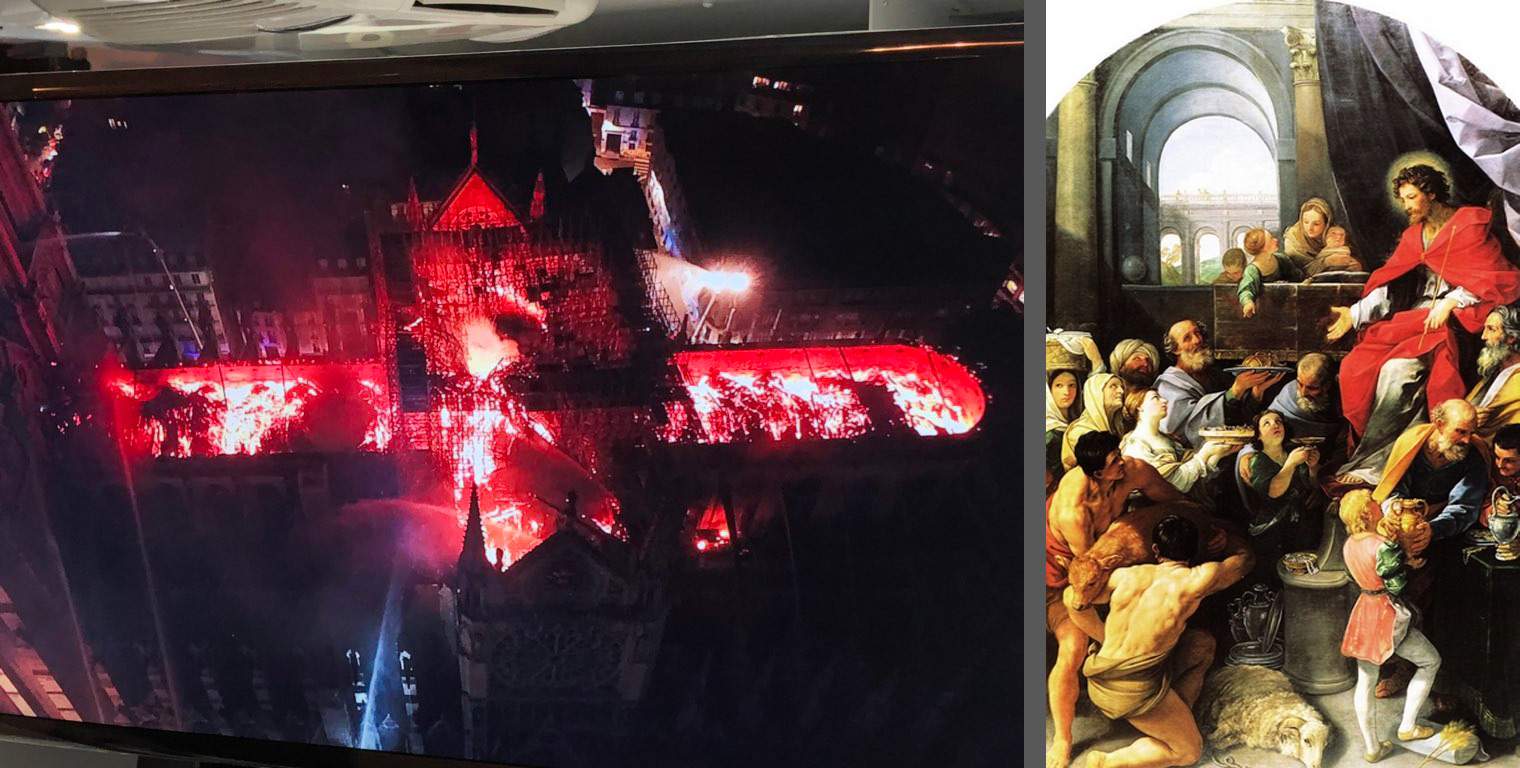 |
| From Guido Reni and Ludovico Carracci to stained glass. The works we risk losing forever in the Notre Dame fire. |
Warning: the translation into English of the original Italian article was created using automatic tools.
We undertake to review all articles, but we do not guarantee the total absence of inaccuracies in the translation due to the program. You can
find the original by clicking on the ITA button. If you find any mistake,please contact us.

